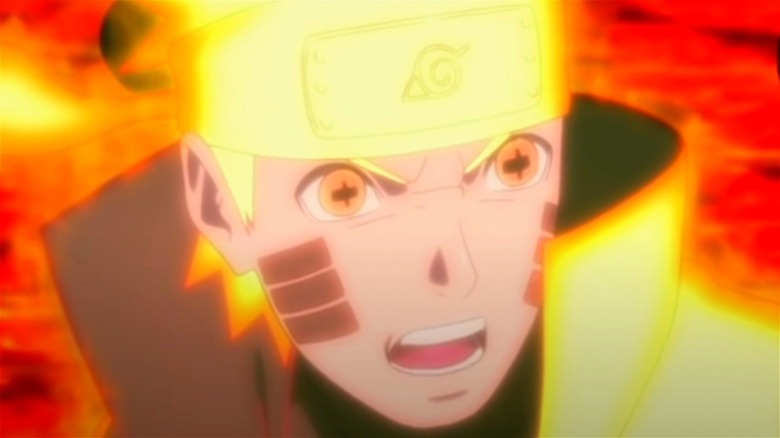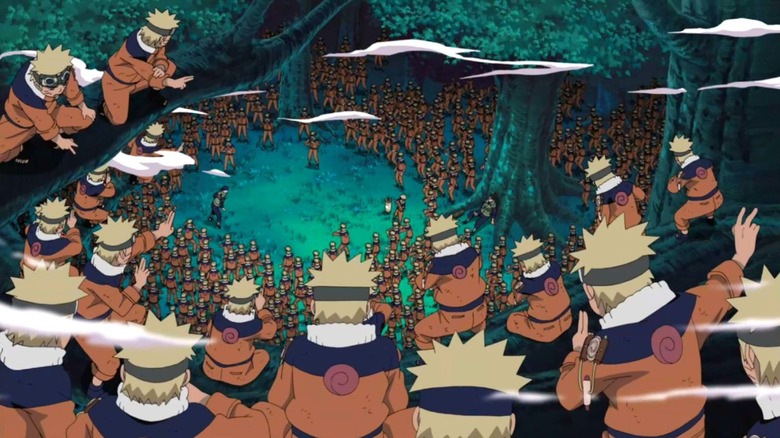Why Some Jutsu Are Off-Limits In The World Of Naruto
If you've ever watched "Naruto," then you've probably heard the word "jutsu" thrown around here and there as if it means something to those of us who don't speak Japanese. It's present in many of the major translations of the anime, including the English dub, and is used to reference all manner of crazy ninja spells used by Naruto and his cohorts throughout their journey. Summoning giant frogs, creating handheld balls of lightning, and pretty much anything else related to ninja arts are considered jutsu. In fact, the term "jutsu" roughly translates into "art" or "technique" (via Japanese with anime).
There are a wide variety of jutsu practiced in both "Naruto" and the real world that can be lumped into different categories. Taijutsu, for instance, refers to any techniques meant for hand-to-hand combat. However, there is one type of jutsu out there that isn't always mentioned — kinjutsu, or forbidden jutsu. Unlike taijutsu, it isn't a classification based on purpose, but instead a name signifying the jutsu's social acceptance. Not every jutsu is looked upon in a positive light, and some are considered forbidden to study or use in various countries. But why are some jutsu off-limits in the world of "Naruto"?
Kinjutsu are banned for a variety of reasons
While there isn't a whole lot of extensive criteria for determining why a jutsu has been deemed forbidden by the ninja world of "Naruto," there are three major qualifications that most kinjutsu fulfill at least one of, according to the "Naruto" wiki. The first is that a jutsu can be deemed forbidden if it has a high risk of harming the user. The Demon Dead Consuming Seal, for instance, requires that the user sacrifice their own life, making it forbidden.
Another qualification is that the jutsu violates the laws of nature. Pretty much anything that resurrects the dead, like the Outer Path — Samsara of Heavenly Life Technique, falls into this category. Finally, if a jutsu is likely to result in collateral damage, then it will be deemed forbidden. This final criteria is the most likely reason that Naruto's iconic Multiple Shadow Clone Jutsu is considered forbidden, as the latter two stipulations rarely apply to it.
Oddly, just because a jutsu is forbidden doesn't mean that people can't use it. While it may not be openly taught or practiced, there is no real societal ramification for using a kinjutsu specifically. Otherwise, Naruto would have been locked up after learning the Shadow Clone Jutsu in Episode 1. As the wiki points out, however, creating or studying these jutsu in an effort to further them is considered punishable, causing certain rogue shinobi like Orochimaru to leave their respective village.

